// concreteness in the resolution of climate problems and desertification
THE Vallerani SYSTEM //
#vallerani_system_nardigroup #nardigroup120
The vallerani system (vs) for reforestation is a fast and natural way to combat desertification and climate change while still respecting biodiversity.
The VS uses the Delfino³ plow invented and patented by Dr. Venanzio Vallerani and manufactured by Nardi.
The plow creates a system of micro-basins and underground bags which collect rainwater, over flow and other resources available like fine soil, organic matter, seeds, etc.
The VS allows for direct seeding of native plants (possibly supplemented by transplantation of nursery species) whose germination and growth is possible thanks to the water collected into the micro-basins.
The plows working with the VS help by:
- the substantial cracking and buffeting of the soil, due to the speed of the tractor and the construction particularities of the plows, allow the compact soil to be broken up, thereby facilitating the absorption of water and the entry of roots.
- increase speed of production: between 4 to 8 km / h which corresponds to a working surface of 1.5 / 3 he per hour (variable depending on the type of soil, processing, rainfall etc.).
- acheiving total collection and rapid seepage of rain water falling into the micro basins with consequent substantial reduction of evaporation, subsequent recovery of the water table and reduction of the erosion of the soil.
- increased collection of the rain water that falls between the ploughed lines, of the seeds and straw transported by the wind, with continuous improvement of the fertility and of crop production.
- creating 2 to 4 times more water available for crops, pastures, and plants (water table).
- enhancing the maintenance and growth of plant and animal biodiversity, which is strongly promoted by improving agronomic conditions in the soil.
- reuse of hard, compact soil, previously abandoned because it was impossible to work manually.
- lowering cost: 80 to 130 Euros/hectar, depending on: the size of the intervention, the characteristics of the soil, the distance between the working lines, the cost of labor, days of work and other auxiliary components.
- lowering environmental impact as only 10-20% of the land is worked.
// custom settings
The Plow Delfino3 //
#delfino3_nardigroup
The Delfino 3s is composed of a single reversible mouldboard and a ripper.
According to soil and rainfall characteristics and to the projects’ objectives, the depth and length of work of ripper and mouldboard as well as the type of underground movement can be adjusted. Other adjustments can be done for a wide range of needs.
The single reversible mouldboard digs, thanks to its wave motion, micro basins 3,5m – 5m long, 40-50 cm wide and 40-50 cm deep.
The ripper, located in front of the plough, cracks and loosens up the soil at a depth of 60-70cm. It creates an ongoing underground splitted furrow which collects the water from the adjoining micro basins.
The ripper does not reverse the upper soil and protects the ploughshare from braking.
The motion and the reversibility of the ploughshare are obtained by a hydraulic system.
The reversibility of the ploughshare allows an efficient work to promote the entry of run-off while working along the contour. It avoids empty returns.
In all configurations, the technical characteristics of the Delfino 3s and the speed of the tractor brake and crack the compact soil, facilitating deep infiltration of rainwater and roots growth. This water is thus protected from evaporation.
The rainwater, top soil, seeds, organic materials transported by wind and run-off accumulate in the micro basins and along the ripper tilling line boosting a longlasting regeneration process.

// the multiple uses of an innovative system
Applying Vallerani System //
#vallerani_system_nardigroup
Reforestation
Improvement of pasture
Agricultural cultivation
Windbreaks
The four types of interventions can be implemented in an integrated manner…
Given that:
it is essential to involve and give responsibility to the local people in every step of the process and that they adopt safeguarding measures for the period necessary for the “settlement” and the management of the results;
the VS is based on direct seeding of native plants because seedlings have the strength necessary to auto propagate, the natural root system is not mutilated and superficial and the produced seeds allow to easily create new plants;
through its special tillage process VS offers the highest degree of efficiency in the first year of operation and due to the big extension of the processable land, the operation itself should not be repeated on the same site.
Schematic overview of the stages of the correct and complete implementation of VS in the field of reforestation and the establishment of windbreaks.
Factors to be considered when chosing land to be processed:
Pluviometry: one must consider the ten-year rainfall data to calculate the minimum and maximum distances between the processing lines to collect all the rain and avoid erosion. The greater the intensity of precipitation the closer the processing lines have to be.
Position: should allow the working in contour from the higher point or points.
Size of the area to work: given the speed of the tractor it is convenient to have long fields.
Compactness and porosity of the land: gives important clues about the flow and absorption of the rain rate.
Possibility of restoration of existing green areas such as Oasis, lake shores and rivers, boulis etc…
Fertility: important information for estimating the percentage of successful intervention.
Stoniness: large rocks and stones, if any, can cause damage to the tractors tires and to the plows. This is particularly important in soils that are subject to deforestation and are becoming glacis.
Seed collection and conservation should be organized with the local population.
The seeds must be collected from the plants at the time of their maturity and properly maintained.
We recommend the purchase of the missing seeds:
if the amount of seed collected is not sufficient for all the plowed fields;
to better propagate pre-existing species which, because of environmental degradation, are no longer sufficient to ensure adequate dissemination.
The farmers can shake the seeds directly from the plants, at the appropriate time, to feed the goats and sheep and collect the dung in their overnight shelter. The seeds that have passed through the stomach of animals sprout more easily, are protected from the animals (mice, birds, etc.) until the arrival of the rains and the dung is an ideal fertilizer to facilitate the early development of seedlings.
The seed laiden dung is ideal for spreading in the microbasins and can lead to germination rates of 95%. (data: Desertoverde.ch).
If the propagation by seed is difficult and transplanting is necessary, we recommend the use of very young plants that suffer less during the inevitable stress and mutilation inherent in the practice.
Where possible, we suggest to sow the same species next to the seedling.
Where applicable, special planting of leguminosae and grasses between the tilling lines and within the crescents increase soil fertility and quality of pasture.
Where necessary, excess young trees may need to be thinned in order to avoid that too many plants per hectare block the growth of the forest.
// contrast the main problems of the pastures
OPERATIONS FOR MAINTAINING THE PASTURE LAND //
#savetheworld_nardigroup
As is clearly evident, pastureland is in rapid decline due to the reduction of rainfall, the overabundance of livestock per hectare, and the advancing of desertification.
Natural dissemination is heavily obstructed by the fact that the species that make it up no longer manage to go to seed. An extremely important operation would therefore be that of putting pasture land in the condition to disseminate by rotation preventing the grazing of livestock before the seeds mature.
This could be obtained with the help of the VS through the systematic formation of tree rich pasture land created using the species which are locally most suited to the task. The trees can be cut annually in the most appropriate moment for their rejection and would provide a supplement of foodstuffs relieving the overload on the pasture land itself.
It is necessary to explain and transmit this idea to the shepherds and ensure the possibility for its practical diffusion in so much as we believe that no valid alternatives exist.



